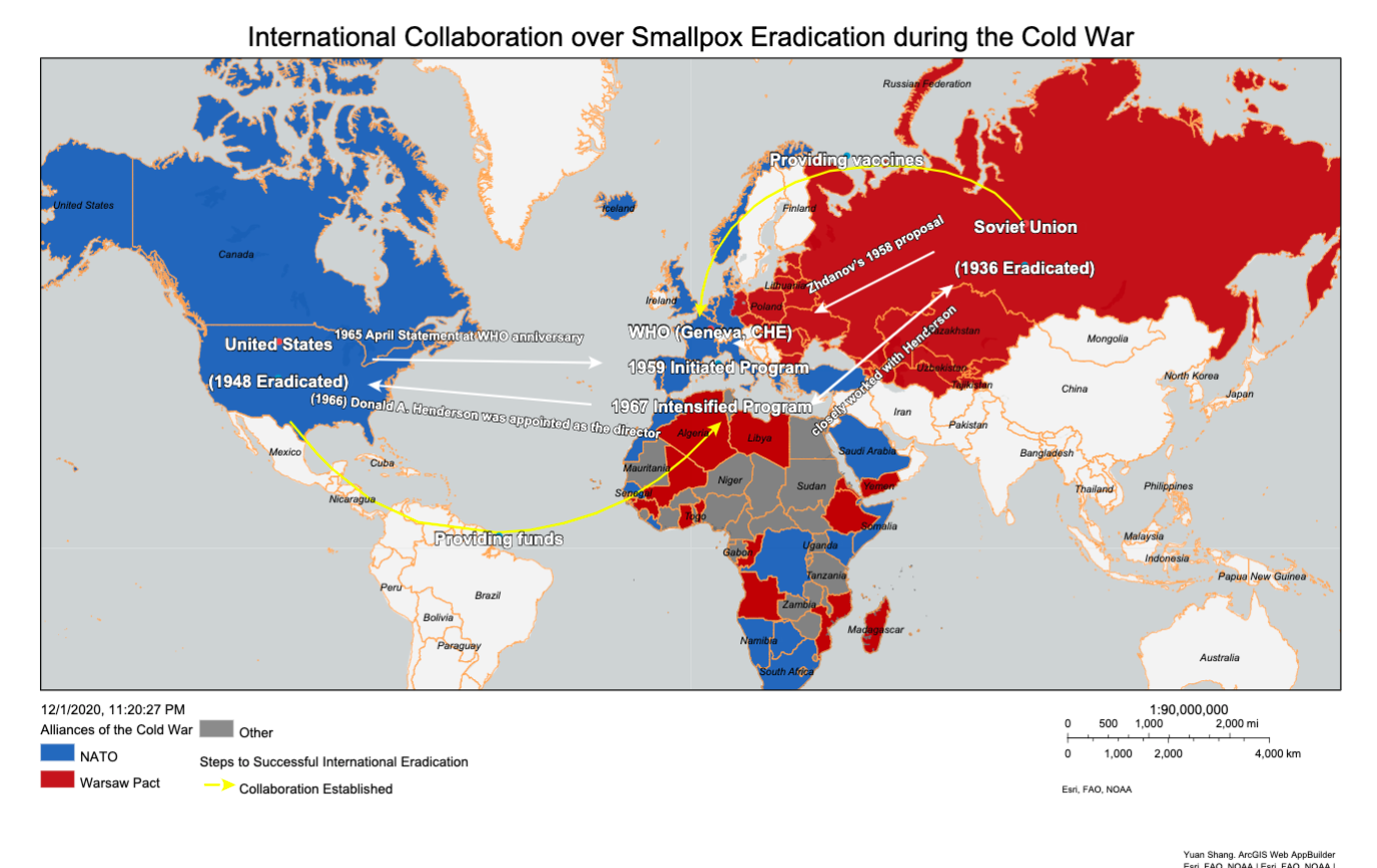Smallpox and the Cold WarSmallpox and the Cold War
Smallpox is a fatal contagious disease caused by Variola major/minor viruses and spread through person-to-person contact and saliva droplets in an infected person’s breath. In the 20th Century alone, more than 300 million people died of Smallpox. Only by 1980, as the effort of global smallpox eradication succeeded, humans were not suffering from it anymore.
This map briefly visualizes how two competing superpowers during the cold war, the US and USSR, could support the World Health Organization to initiate and implement the Smallpox Eradication Program globally. The map shows the power distribution during the cold war, color-coded with blue and red. Arrows indicate the main breakthrough in the process of seeking international collaboration. From the eradication proposal presented by Zhdanov in 1958, it took another seven more years for the US to officially announced their support in the Smallpox Eradication Program and another two years to agree to provide any resources for the program. With the US providing funds and the USSR providing smallpox vaccines’ mass production, Smallpox could finally be eradicated globally in 1980.
It was a process full of obstacles. However, with international collaboration between two superpowers, even during a highly competitive era, people living in the current time could stop worrying about Smallpox’s deadly disease.
